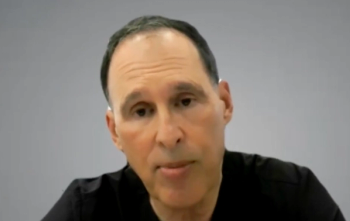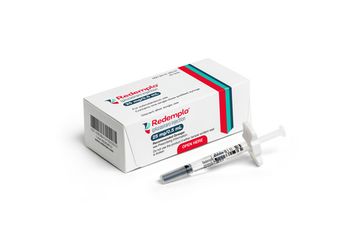
- MHE November 2022
- Volume 32
- Issue 11
Oncologist, Dispense it Thyself
More practices are directly dispensing oral cancer drugs, bypassing specialty pharmacies. What does this trend mean for patients and healthcare?
A few years ago, healthcare economist Genevieve Kanter, Ph.D., saw a slew of ads in trade magazines targeted at physicians. They promoted a new model of oncology treatment. Practices, especially community oncology practices, were directly dispensing oral medications rather than using specialty pharmacies. Kanter, a research assistant professor of medical ethics and health policy at the University of Pennsylvania’s Perelman School of Medicine was curious. She wanted to understand this trend, so she spearheaded a study of the phenomenon.
The fruits of Kanter’s research were published online in JCO Oncology Practice in July. Her findings showed that in 2019 approximately one-third of oncologists were in practices offering “medically integrated dispensing” — another name for direct dispensing. Usage of that model had expanded significantly since 2010.
“What really impressed me were the trends,” she says. From 2010 to 2019, there was a 151% increase in model use among all practices and a 272% increase among community-based practices. “The trends don’t look like they are attenuating at all,” Kanter says. “It looks like it’s continuing on its way.”
The study focused on six cancers with both oral and IV therapeutic alternatives. Kanter collaborated with researchers at the University of Southern California, Anthem, HealthCore, and others to determine the model’s prevalence. They created a novel data set linking pharmacies to oncologists and their practices, and they analyzed national and state trend in direct dispensing by community and hospital-based oncologists.
Researchers found that these community-based practices treat 55% of patients with cancer, and that the share of community oncologists in medically integrated dispensing practices increased from 7.6% in 2010 to 28.3% in 2019. They also introduced questions about whether this model improves patient outcomes and access, and whether it affects prescribing patterns and overall healthcare costs.
Why the increase?
Kanter says the move toward direct dispensing occurred because cancer therapy’s delivery methods have significantly changed in recent decades. Previously, someone with advanced cancer would likely be treated at the practice with physician-administered IV drugs. Compensation includes an administration fee and a percentage of the drug cost. “Most practices made a lot of their revenue from the (IV) drug reimbursement and fee,” she says.
Now an increasing number of cancer treatments come in pill form that patients can take at home on their own. Oral administration is much more convenient for patients, but oral oncology medications traditionally have been dispensed by specialty pharmacies, not oncology practices. That means oncologists are losing revenue by not being reimbursedfor the oral cancer drugs. Medically integrated dispensing can bring that revenue from oral cancer drugs back to oncologists.
Although the study showed that the biggest growth was in community oncology practices, Jeff Gordon, M.D., has seen large hospital systems move in this direction. Gordon, medical director of hematology-oncology at UMass Memorial Health-Harrington in Southbridge, Massachusetts, notes that major hospital systems already have built-in pharmacies for dispensing medications, making it easier to offer specialty oral oncology treatments.
Benefits and drawbacks
Direct dispensing by oncologists may have some benefits for patients, including getting treatment started sooner, in Kanter’s view. Proponents see the opportunities for better medication adherence and closer monitoring of patients. Drug-related toxicities might be avoided because oncologists are more directly involved. “There are a lot of potential benefits, but we need to systematically evaluate them,” Kanter notes, adding, though, that her research hasn’t yet documented these findings. As for prior authorization, Kanter says the process would likely be the same for direct dispensing as it is would be for getting drugs through a specialty pharmacy.
Gordon says it can be an advantage to keep more care internal to coordinate overall patient care and follow-through. This could help speed up the process of getting drugs to patients after insurance approval, rather than waiting for the drugs to be shipped to patients. Another potential advantage to health systems is financial. “Big hospital systems that do it find it to have favorable economics,” Gordon says. Direct dispensing can help them consolidate some of their operations, decreasing the bureaucracy layers and red tape of dealing with an outside specialty pharmacy.
As for patients, from what Kanter has seen, out-of-pocket costs are no different. “Patients on the whole have been protected,” she says.
Introducing more competition could improve specialty pharma pricing, Gordon says, with a potential opportunity to save money on overall U.S. healthcare delivery. But even if the larger healthcare systems realize savings, there’s no guarantee that they will pass on those savings to patients or payers. “There’s always a concern that big hospital systems taking over different aspects of patient care might result in fewer competing against them, which can lead to higher costs,” Gordon notes. Direct dispensing by large healthcare systems also could lead to those systems locking in patients, he says, especially in areas where large healthcare systems dominate all aspects of care.
Another concern is whether direct dispensing creates incentives for inappropriate prescribing. “It’s a possibility,” Gordon says, but “I don’t see it as a major issue.”
Kanter says preliminary research suggests there are no big therapeutic changes in decision-making as a result of direct dispensing, although she has seen some signs of oncologists tending to prescribe higher-priced drugs with larger profit margins instead of generic medications or lower-priced brand- name drugs.
The 340B Drug Pricing Program may be a factor in direct dispensing. The program allows some hospitals to buy drugs at a steep discount and then get reimbursed at normal levels. The difference is supposed to go toward programs that improve access to care for underserved populations. The 340B program has become controversial because, according to critics and some independent reporting, hospitals have taken advantage of the program and used the revenue they realize from the discounted prices for other purposes.
“Once you have an outpatient practice and 340B designation, your pharmacy becomes very profitable in the health system,” Kanter says. “I imagine that we will see this model being adopted widely in hospitals.”
Given that the 340B program is set up to help care for underserved populations, Gordon says, “one would hope that the savings would be passed on to what the patient pays.”
If it can be shown that direct dispensing does, in fact, improve care coordination and result in more cost-effective care, it may be incorporated into value-based payment models, Gordon observes. But that is a major “if” there, and it may take positive findings from studies by researchers such as Kanter before direct dispensing becomes part of the value-based care playbook.
Gordon says large private groups of oncologists are getting into direct dispensing “but it can be difficult for small groups.” Facilities need a pharmacy system to make medically integrated dispensing work.
“That’s why you see large systems do it,” Gordon says. It requires having the space, licensing, regulatory permits, drug cabinets, inventory management system, negotiation and billing capabilities, and a trained pharmacist. Plus acquiring pills may require a large outlay of funds and assurance that reimbursement will make it worthwhile. “It can be extremely prohibitive for small entities to do it. They don’t have that type of money and logistical setup to make it work, to make that big investment,” Gordon says.
The other challenge is legal. Some states do not permit prescribers to own a pharmacy.
“This is a new model that has the potential to really help patients but may also be challenging to other aspects of the healthcare system in terms of reimbursement and payments. It is something that warrants closer scrutiny,” Kanter says.
Articles in this issue
about 3 years ago
Get a Cancer Gene Test? A Tool for Helping to Decideabout 3 years ago
SCAN Tackles Major Disparities in Adherenceabout 3 years ago
Personalized Solutions Boost - Medication Adherenceabout 3 years ago
EmsanaRx Is Getting Formulary Advice From Cleveland ClinicNewsletter
Get the latest industry news, event updates, and more from Managed healthcare Executive.

















































